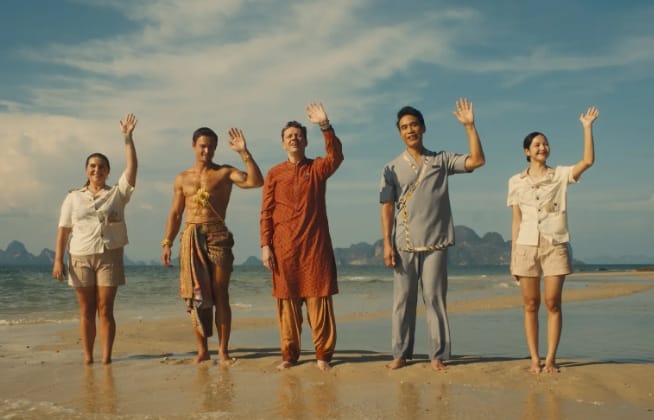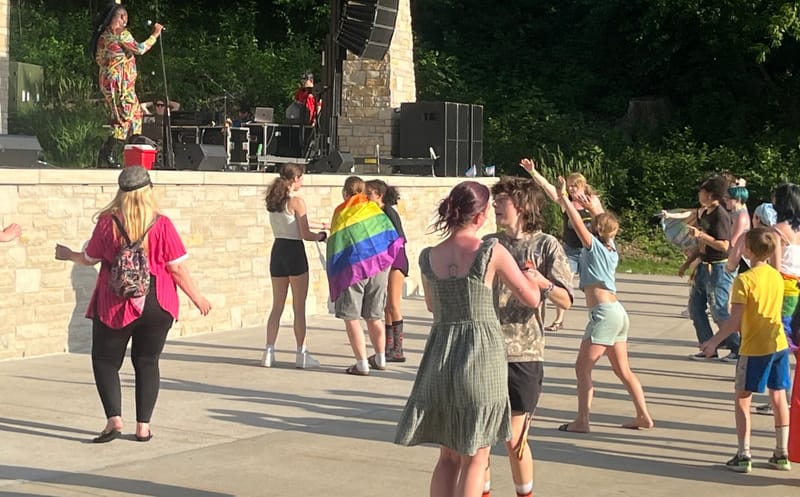White Lotus: Wherever you go, there you are
For all the cultural immersion these folks may claim to want, they spend almost all of their vacation on the grounds of the resort. Their experience, in other words, is entirely curated. They might have stayed home and watched a documentary.

Looking to break free from the demands of your life, to broaden your worldview, to lose yourself in a so-called exotic culture, and possibly even find your authentic self in the process.
Book a stay at the White Lotus.
But be forewarned. The authentic self you find may not be so different from the one back home and its shortcomings even amplified. Let’s just say those ornate mirrors in the luxury rooms may not be the most revealing mirrors you encounter at the White Lotus.
The third season of Mike White’s keenly observed study in white privilege and denial, now on MAX, promises to be the most entertaining one yet. Though entertaining here should read as cringy and, well, perhaps a bit too close to home for some.
Like the first two – Season 1 in Hawaii; Season 2 in Italy – White Lotus 3 deposits three or four groups of vacationers onto the resort’s lush grounds. Like the first two, these folks – nearly all white, nearly all of a certain financial stature – are greeted obsequiously by the smiling staff, most of whom will spend the intervening weeks of the show wavering between bemusement and contempt toward their oblivious charges.
Each season begins with the McGuffin of a dead body in the opening minutes of the first episode. While that serves as a savory appetizer, it’s the main meal that most viewers come for. And the White Lotus menu has everything from self-deception to self-satisfaction to cultural exploitation to cultural condescension to toxic masculinity and so much more. As a tasting menu it offers some of the most subtle and most glaring of the human frailties.
The groupings for Season 3 – which takes place at the White Lotus Thailand – includes an elite North Carolina family that carries their status and assumed superiority with an almost benign – but amusing – grace. Mom’s popping benzos; Dad’s an arrogant health nut (think RFK, Jr without the worm in his head); and the three sibs exhibit some questionable boundary issues, especially around sexuality. The oldest son is toxic masculinity personified, yet deeply pathetic.
It’s pretty clear the youngest son feels overwhelmed by the father’s and brother’s glut of testosterone and shrinks into his own world – and body – while the sister is bent on exploring Buddhism. (Though it is clear Mike White is not about to spare her from revelation and embarrassment).
Three women friends make up another of the clusters. One is a well known though perhaps fading actress; another leads a seemingly fulfilled life in Texas and the third, played by the always amazing Carrie Coon, seems to be struggling to keep her life on track. The women, all in their forties, bestow their compliments on one another in such a gushy overweaning manner that White tips us off right away that this will not end well.
That these women have not seen each other in years has only frayed the edges of what were probably always tenuous bonds. Triangulation begins quickly, with each at some point teaming up with one of the others to secretly toss darts at the third … but always in the guise of deep concern.
The other group we get to know is a depressed forty-something played by the great Walton Goggins and his girlfriend, whose grace and kindness toward the anhedonic pain-in-the-ass Goggins would be hard to watch if it didn’t seem to be coming from a place of pure goodness and grace.
Circling around and through these folks' lives are the staff, and this being a “wellness” retreat, that includes meditation guides, yoga instructors, masseuses (including a Black American woman who was in Season 1 and has her own story arc) and reiki healers. White gives these people lived-in and explored lives but there is no escaping the fact that they exist within the world of this show to give their guests a unique experience.
Through three seasons we have seen all types of visitors to the White Lotus, from the brusque and blind who barely register the staff as human; to the folks on the other end of the spectrum who believe they can seamlessly assimilate into the culture in a few days. This latter type nearly always comes off as condescending, a condescension the natives must endure with tight-lipped grace. These are the sort of benign liberals cultural conservatives might label virtue-signalers.
For all the cultural immersion these folks may claim to want, they spend almost all of their vacation on the grounds of the resort. Their experience, in other words, is entirely curated. They might have stayed home and watched a documentary.
Specifically to Season 3 is the issue of easy fixes through a quick dip of the toe into Buddhist waters. While it seems clear that the staff is earnest in trying – gently – to coax these privileged folks into a genuine healing experience – and may even pity them – the show seems to suggest that we can’t escape ourselves, nor our own culture, with a quick jaunt to Southeast Asia or Hawaii or Italy. Wherever we go, there we are.
The truth is, when it comes to evolving as people, luxury and pampering are not on the ingredients list.
It’s hard to know where this all is heading. There are plenty of intriguing plot points outside of the human interaction, quiet desperation and cultural clashes, though those latter items are what White has in mind for us to focus on.
In Episode Three, the Walton Goggins character, blottoed out of his mind on pot and still shuffling through his vacation, decides to open half a dozen cages and set free some venomous snakes. It’s hard not to think of us as those snakes stuck in our cages, full of the venom of our own disappointments and self doubt. Mike White seems to say that for us, there is no escaping them. Not at the White Lotus, anyway.






